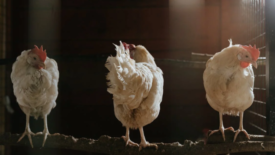Contamination Control
Each step in poultry processing represents a different risk level for Salmonella prevalence and/or cross-contamination.
Read More
Never miss the latest news and trends driving the food safety industry
eNewsletter | Website | eMagazine
JOIN TODAY!Copyright ©2024. All Rights Reserved BNP Media.
Design, CMS, Hosting & Web Development :: ePublishing










